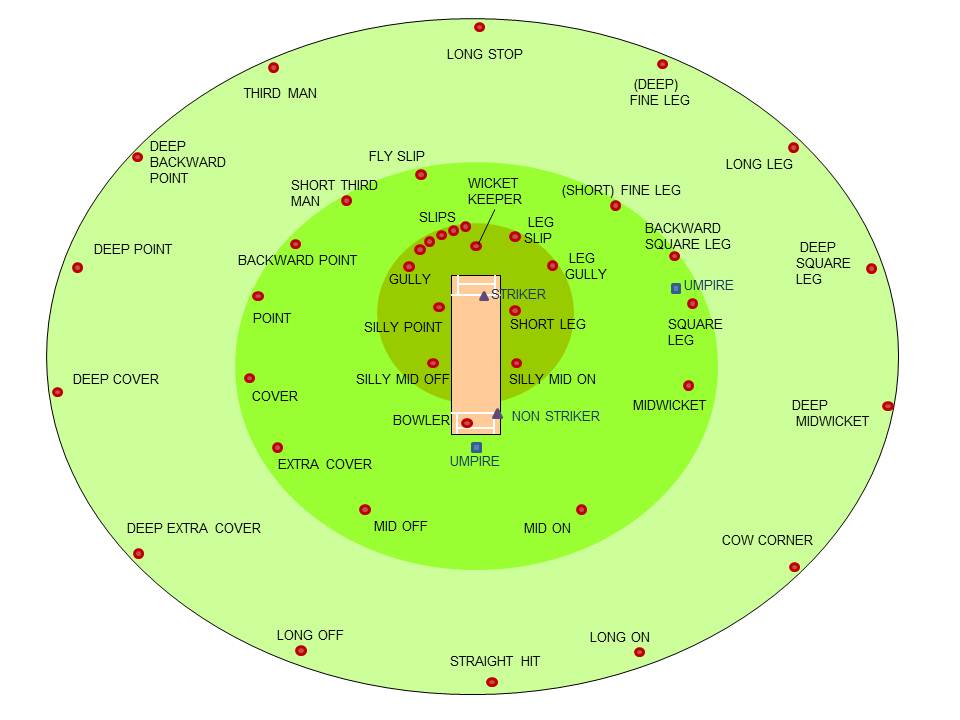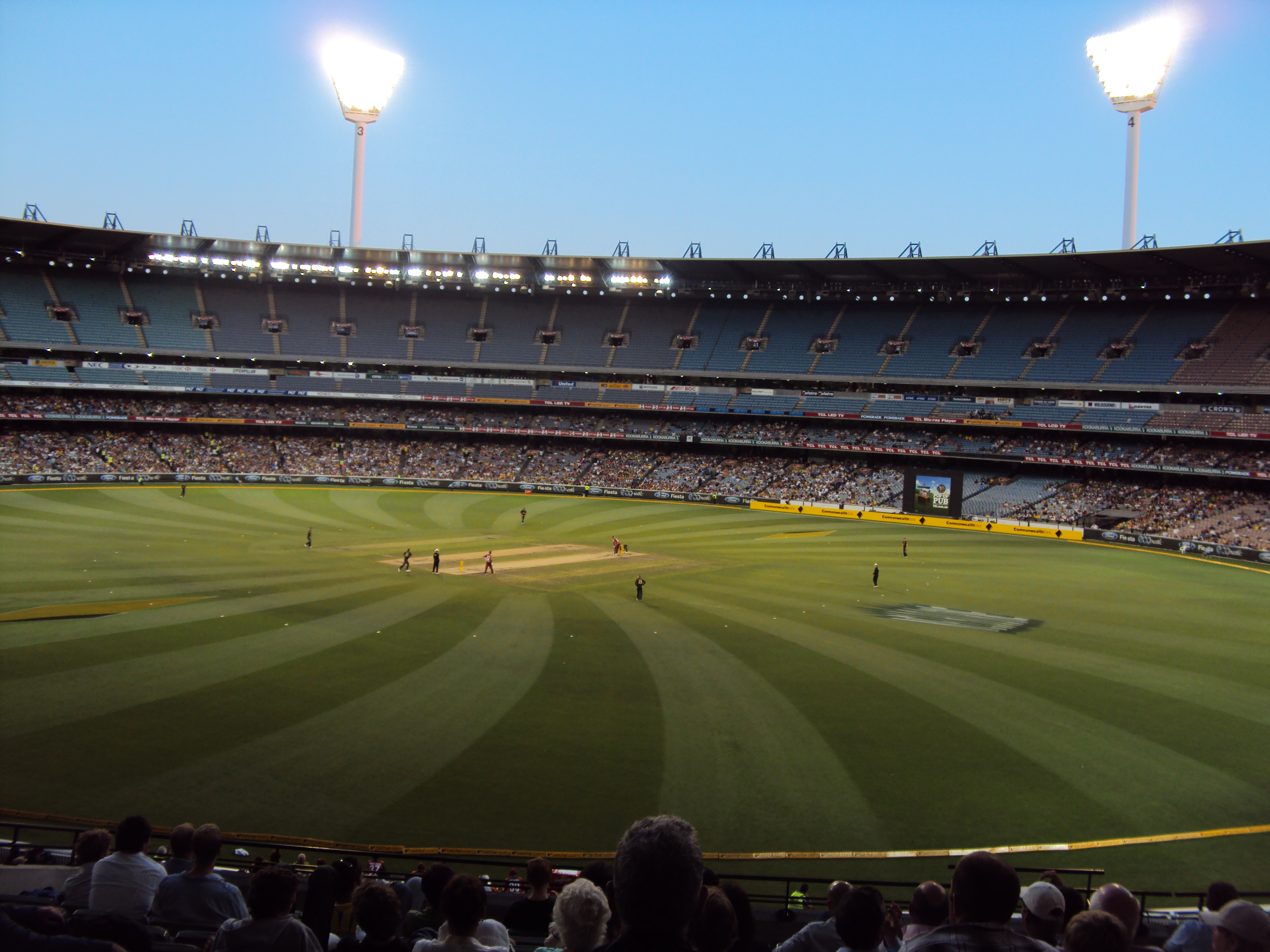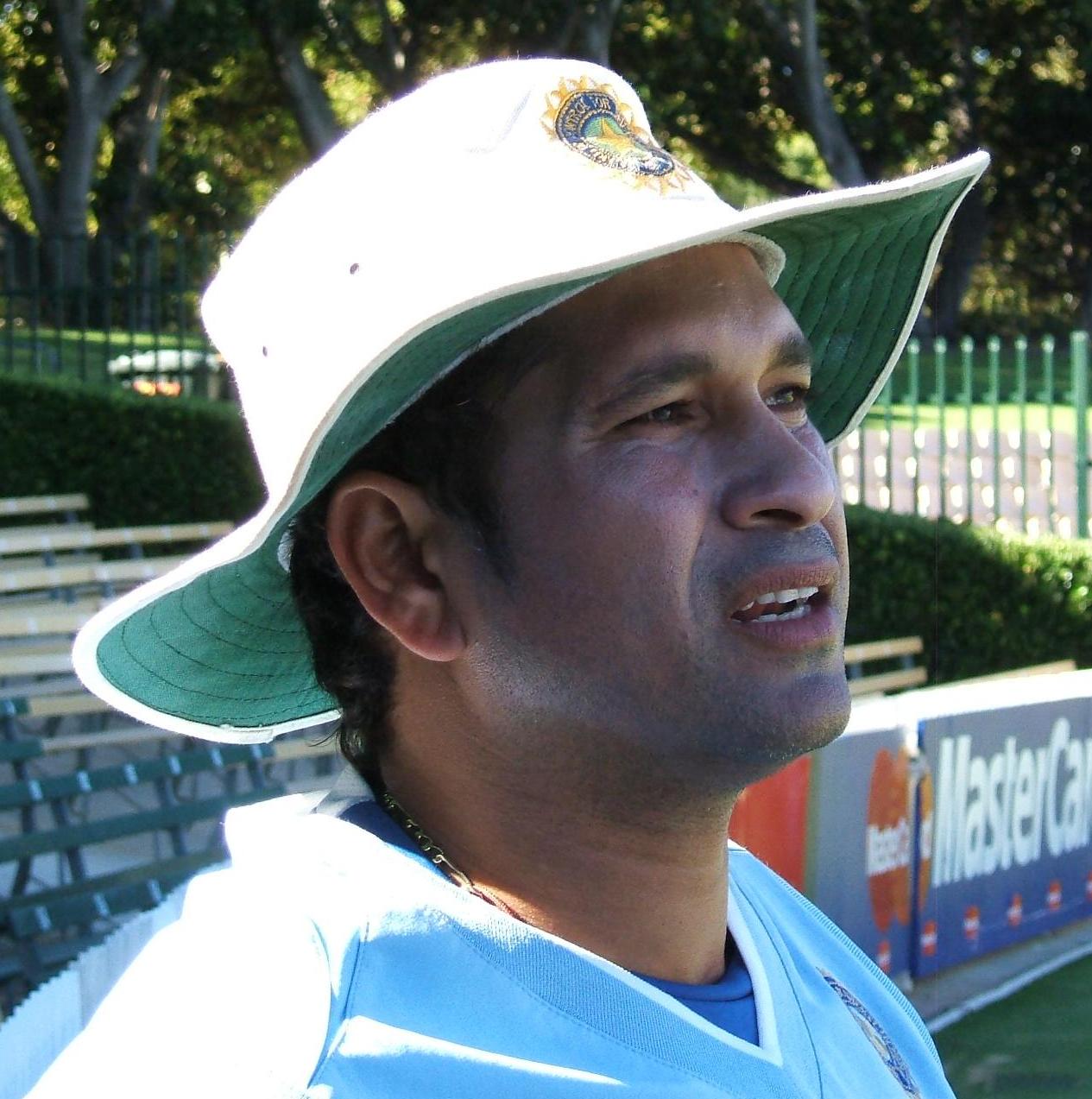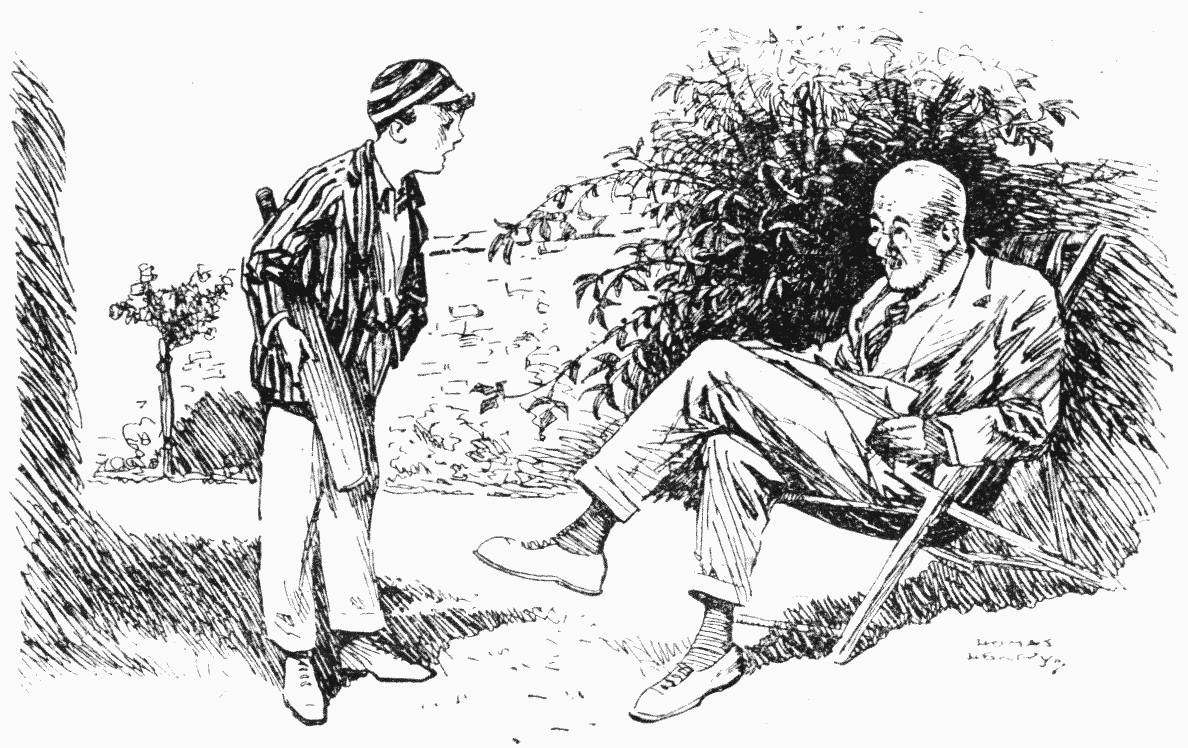|
Session (cricket)
In cricket, a session is a period of play during which overs are played continuously until a break in play is called. In Test matches, each of the five potential days of the match typically comprises three main sessions, usually referred to as the morning, afternoon, and evening sessions. The morning and afternoon sessions are usually separated by a 40-minute lunch break, and the afternoon and evening sessions by a 20-minute tea break. Each of the three sessions is approximately 30 overs long, and is broken up further into two to three minor sessions varying in length, separated by drinks breaks. The exact timing of these intra-session breaks is the umpiring team's call. In One Day Internationals, matches are played over two innings, with three sessions in each, usually in lengths of 15, 15, and 20 overs. These three sessions may also contain short drinks breaks. Additionally, day-time ODI matches include a lunch break between the first and second innings. In day-night ODI matche ... [...More Info...] [...Related Items...] OR: [Wikipedia] [Google] [Baidu] |
Cricket
Cricket is a Bat-and-ball games, bat-and-ball game played between two Sports team, teams of eleven players on a cricket field, field, at the centre of which is a cricket pitch, pitch with a wicket at each end, each comprising two Bail (cricket), bails (small sticks) balanced on three stump (cricket), stumps. Two players from the Batting (cricket), batting team, the striker and nonstriker, stand in front of either wicket holding Cricket bat, bats, while one player from the Fielding (cricket), fielding team, the bowler, Bowling (cricket), bowls the Cricket ball, ball toward the striker's wicket from the opposite end of the pitch. The striker's goal is to hit the bowled ball with the bat and then switch places with the nonstriker, with the batting team scoring one Run (cricket), run for each of these swaps. Runs are also scored when the ball reaches the Boundary (cricket), boundary of the field or when the ball is bowled Illegal delivery (cricket), illegally. The fielding tea ... [...More Info...] [...Related Items...] OR: [Wikipedia] [Google] [Baidu] |
Test Cricket
Test cricket is a Forms of cricket, format of the sport of cricket, considered the game’s most prestigious and traditional form. Often referred to as the "ultimate test" of a cricketer's skill, endurance, and temperament, it is a format of international cricket where two teams in white clothing, each representing a country, compete over a match that can last up to five days. It consists of four innings (two per team), with a minimum of ninety Over (cricket), overs scheduled to be bowled per day, making it the sport with the longest playing time. A team wins the match by outscoring the opposition in the Batting (cricket), batting or bowl out in Bowling (cricket), bowling, otherwise the match ends in a Result (cricket), draw. It is contested by 12 teams which are the List of International Cricket Council members, full-members of the International Cricket Council (ICC). The term "test match" was originally coined in 1861–62 but in a different context. Test cricket did not beco ... [...More Info...] [...Related Items...] OR: [Wikipedia] [Google] [Baidu] |
Umpire (cricket)
In cricket, an umpire (from the Old French meaning not a peer, i.e. not a member of one of the teams, impartial) is a person who has the authority to make decisions about events on the cricket field according to the ''Laws of Cricket''. Besides making decisions about legality of delivery, appeals for wickets and general conduct of the Game in a legal manner, the umpire also keeps a record of the deliveries and announces the completion of an over. The umpires in cricket are not to be confused with the referee who usually presides only over international matches and makes no decisions affecting the outcome of the game. Overview Traditionally, cricket matches have two umpires on the field, one standing at the end where the bowler delivers the ball (bowler's end), and one directly opposite the facing batsman (usually, but not always, at square leg). However, in the modern game, there may be more than two umpires; for example Test Matches have four: two on-field umpires, a thir ... [...More Info...] [...Related Items...] OR: [Wikipedia] [Google] [Baidu] |
One Day International
One Day International (ODI) is a format of cricket, played between two teams with international status, in which each team faces a fixed number of fifty overs, with the game lasting up to 7 hours. The World Cup, generally held every four years, is played in this format. They are major matches and considered the highest standard of List A, limited-overs competition. The international one-day game is a late-twentieth-century development. The first ODI was played on 5 January 1971 between Australia and England at the Melbourne Cricket Ground. When the first three days of the third Test were washed out officials decided to abandon the match and, instead, play a one-off one day game consisting of 40 eight-ball overs per side. Australia won the game by 5 wickets. ODIs were played in white-coloured kits with a red-coloured ball. In the late 1970s, Kerry Packer established the rival World Series Cricket competition, and it introduced many of the features of One Day International c ... [...More Info...] [...Related Items...] OR: [Wikipedia] [Google] [Baidu] |
Batting (cricket)
In cricket, batting is the act or skill of hitting the cricket ball, ball with a cricket bat, bat to score runs (cricket), runs and prevent the dismissal (cricket), loss of one's wicket. Any player who is currently batting is, since September 2021, officially referred to as a batter regardless of whether batting is their particular area of expertise. Historically, ''batsman'' and ''batswoman'' were used, and these terms remain in widespread use. Batters have to adapt to various conditions when playing on different cricket pitches, especially in different countries; therefore, as well as having outstanding physical batting skills, top-level batters will have quick reflexes, excellent decision-making skills, and be good strategists. During an innings two members of the batting side are on the pitch at any time: the one facing the current delivery from the bowler is called the striker, while the other is the non-striker. When a batter is dismissal (cricket), out, they are replac ... [...More Info...] [...Related Items...] OR: [Wikipedia] [Google] [Baidu] |
Bowling (cricket)
Bowling, in cricket, is the action of throwing, propelling the cricket ball, ball toward the wicket defended by a batter. A player skilled at bowling is called a ''bowler''; a bowler who is also a competent :Batting (cricket), batter is known as an all-rounder. Bowling the ball is distinguished from throwing (cricket), ''throwing'' the ball by a strictly specified biomechanical definition, which restricts the angle of extension of the elbow. A single act of bowling the ball towards the batter is called a ''ball'' or a ''delivery (cricket), delivery''. Bowlers bowl deliveries in sets of six, called an ''over (cricket), over''. Once a bowler has bowled an over, a teammate will bowl an over from the other end of the pitch. The Laws of Cricket govern how a ball must be bowled. If a ball is bowled illegally, an umpire (cricket), umpire will rule it a ''no-ball''. If a ball is bowled too wide of the striker for the batter to be able to play at it with a proper cricket shot, the bowler' ... [...More Info...] [...Related Items...] OR: [Wikipedia] [Google] [Baidu] |
Nightwatchman (cricket)
In the sport of cricket, a nightwatchman is a lower-order batter who comes in to bat higher up the order than usual near the end of the day's play. The nightwatchman's job is to maintain most of the strike until the close of play. The name comes due to the goal of remaining in overnight after the end of the day, a play on words on the watchmen of public safety and law enforcement. In doing so they protect more capable batters from being out cheaply in what may be a period of tiredness or poor light at the end of the day and again the following morning when the early-morning conditions may favour the bowlers who will be refreshed from their night rest. The theory is that losing two top-order batters in quick succession would be worse than losing one top-order batter and a tailender. Tactical consideration The role of nightwatchman is generally given to players who emphasise defensive technique over quick run-scoring, most often a bowler who would normally bat in the 8th or 9th ... [...More Info...] [...Related Items...] OR: [Wikipedia] [Google] [Baidu] |
Wicket (cricket)
In the sport of cricket, the term wicket has several meanings: * It is either of the two sets of three stumps and two bails at each end of the pitch. The fielding team's players can hit the wicket with the ball in a number of ways to get a batter out. ** The wicket is guarded by a batter who, with their bat (and sometimes with their pads, but see the laws on LBW, leg before wicket), attempts to prevent the ball from hitting the wicket (if it does, he may be bowled out) and to score runs where possible. * Through metonymic usage, the dismissal of a batter is known as the ''taking of a wicket'', * The cricket pitch itself is sometimes referred to as ''the wicket''. History The origin of the word is from wicket gate, a small gate. Originally, cricket wickets had only two stumps and one bail and looked like a gate, much like the wicket used in the North American game of wicket. The third (middle) stump was introduced in 1775, after Lumpy Stevens bowled three succ ... [...More Info...] [...Related Items...] OR: [Wikipedia] [Google] [Baidu] |
Cricket Terminology
This is a general glossary of the terminology used in the sport of cricket. Where words in a sentence are also defined elsewhere in this article, they appear in italics. Certain aspects of cricket terminology are explained in more detail in cricket statistics and the naming of fielding positions is explained at fielding (cricket). Cricket is known for its rich terminology.''Glossary of cricket terms''. England Cricket Board. Retrieved 13 May 2008."Cricket Academy – Glossary". |
Playing Time (cricket)
Games in the sport of cricket are played over a number of hours or days, making it one of the sports with the longest playing time, though Sailing (sport), sailing, Yacht racing, yachting, road bicycle racing, road cycling, and rallying are sometimes longer. Typically, Test cricket, Test and first-class cricket matches are played over three to five days with, at least, six hours of cricket being played each day. Limited overs formats of cricket take place in one day, with List A cricket, List A matches lasting for six hours or more, and Twenty20, T20, 100-ball cricket, 100-ball and ten10 cricket, T10 matches lasting from 90 minutes to three hours. These variations in length of playing time occur because different formats of cricket have different caps on the number of legal deliveries or days that the innings or overall game can go, with games otherwise theoretically having Timeless Test, no limit as to how long they can go. Cricket therefore has special rules about intervals for ... [...More Info...] [...Related Items...] OR: [Wikipedia] [Google] [Baidu] |
First-class Cricket
First-class cricket, along with List A cricket and Twenty20 cricket, is one of the highest-standard forms of cricket. A first-class match is of three or more days scheduled duration between two sides of eleven players each and is officially adjudged to be worthy of the status by virtue of the standard of the competing teams. Matches must allow for the teams to play two innings each, although in practice a team might play only one innings or none at all. The etymology of "first-class cricket" is unknown, but the term was used loosely before it acquired official status in 1895, following a meeting of leading English clubs. At a meeting of the International Cricket Council, Imperial Cricket Conference (ICC) in 1947, it was formally defined on a global basis. A significant omission of the ICC ruling was any attempt to define first-class cricket retrospectively. That has left historians and statisticians with the problem of how to categorise earlier matches, especially those played in ... [...More Info...] [...Related Items...] OR: [Wikipedia] [Google] [Baidu] |
Day/night Cricket
Day/night cricket, also known as floodlit cricket, is a cricket match that is played either totally or partially under floodlights in the evening. The first regular cricket to be played under floodlights occurred during World Series Cricket, unsanctioned by the International Cricket Council (ICC), attracting large crowds to see some of the world's best players compete in Australia and the West Indies. In 1979, when the ICC and World Series Cricket came to an understanding, the first floodlit One Day International was played, also in Australia. Floodlit cricket has since been played around the world, although England was slow to take it up due to their climate. Floodlit first-class cricket was first played in 1994, when the concept was tried during the Sheffield Shield. Day/night cricket is now commonplace in one-day cricket and Twenty20 cricket. For instance, all 27 matches in the 2014 ICC World Twenty20 were day/night matches, as were most matches in the 2011 Cricket World Cup. ... [...More Info...] [...Related Items...] OR: [Wikipedia] [Google] [Baidu] |









